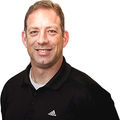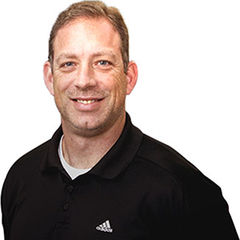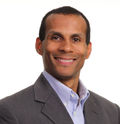When you are training older clients, what is the ultimate outcome you are trying to achieve? Is it to be more "fit" or "healthy" or even "more functional"? These are all worthy goals and may even be terms that your older clients use, but they are too broad and too poorly defined to be really useful.
A more effective approach is to focus on the functional improvements that can be attained through exercise, as these seem to be the most motivating for older adult clients. However, people interpret physical function differently, so to really motivate people to exercise or maintain their exercise programs, it is helpful to find out what is most important for each individual. A helpful framework to do this is to address their needs, likes and wants (NLW for short).
Needs
These are basic activities of daily living (ADL). This includes activities everyone needs to be able to do to take care of themselves and live independently, such as climbing stairs, carrying groceries, doing yard work, dressing, bathing, driving and all of the other mundane tasks that many of us take for granted. It is likely that some of your clients are starting to struggle with performing some of these ADL and are concerned that they may lose their independence.
Likes
These are the activities that provide joy and meaning to everyday life. They vary considerably from person to person, and typically include occupations, hobbies, sports, leisure activities, travel and more. They may be lower-level activities such as golf, playing with grandkids, travel, gardening and painting, or more robust activities such as tennis, hiking, skiing and heavy yard work. When we aren’t able to perform these activities, life becomes pretty dull and boring. What is it that your clients like to do? If you don’t know, ask them. Instead of talking about ADL, talk about how the exercise will help them do the things they already like to do, such as lifting up a grandchild, and then tailor your exercise programs to help them do these very things with greater ease. We aren’t going to train every client to be able to downhill ski, but if that is an activity that your client loves to do, it is your job to make sure he or she can do it well for as long as possible.
Wants
What do your clients aspire to be able to do? These may be activities that they’ve given up because they got “too old.” They may have been a standout tennis player in their 20s or loved to water ski when their kids were young, but gave it all up as they got older. These could also be things that they’ve always wanted to do, but haven’t been able to due to time, money or other constraints. Now that they have reached a more mature stage in their lives, they have more time and money, so often the only thing holding them back is their physical ability.
Think about an amazing adventure trip that you might like to go on some day, such as hiking Machu Picchu, backpacking the Grand Canyon or exploring the Galapagos Islands. Now imagine that you are 70 years old with the time and money to have this amazing experience, but you aren’t physically capable of doing it. One of my clients traveled to Vietnam to hike the world’s longest cave with his son-in-law and teenage grandson when he was 79 years old! These are the experiences that we all long to have when we are older, and which tend to be the most motivating for people to start or continue an exercise program in their later years.
Using the NLWs
Start assessing your clients NLWs right from the beginning. Instead of discussing body fat, building muscles or getting fit, talk to your clients about the life activities that are important to them. Here are some questions to help get them talking:
- What are the things you like to do on a regular basis (e.g., hobbies, sports or leisure activities)?
- What tasks are you struggling with during a typical day?
- Are there any activities you’ve given up in the last few years because you couldn’t physically do them anymore?
- What is something that you would really like to do, but you don’t feel you are physically capable of doing right now?
It's a trajectory. Your clients are not only thinking about today, but about the rest of their lives. Steer the conversation toward their next five to 10 years, while also having them reflect on the past five to 10 years. What do they want those future years to look like? What life events do they want to be prepared for? What will happen if they don’t start exercising? What could their life look like if they follow a sound exercise plan regularly?
Focus on the positive. Despite aches and pains and gray hair and wrinkles, the later part of life can be the most fulfilling. Exercise can help clients make sure that they are able to fulfill the dreams and expectations that they have for themselves. Focus in on the likes and wants that they express to you in conversation.
Build a culture around the NLWs. At our facility, conversations with clients center on their life experiences more than anything else. We use these as a litmus test for the effectiveness of our programs. It is their daily life experiences that drive our programming and they should be telling us on a regular basis about new things they were able to do or things they can now do again because they are healthier, more fit and energetic.
Don, for example, came in one day excited because he was able to tie his own shoes and get his golf ball out of the cup after sinking a long putt (something he hadn’t been able to do before, which cause him a great deal of embarrassment). Another client, Susan, couldn't wait to tell us that despite being the oldest and smallest person on her arctic cruise, she was the first to hop right out of the little Zodiac boat when it beached, and she did it with greater ease than people half her age. And yet another client, Mark, sent us pictures of him and his daughter at the top of Mount Kilimanjaro. These are all clients who accomplished these things because they trained with us. We love these stories and we share them with others as a source of motivation.
Learn more about exercise programming for older adults at the ACE Mover Academy at IDEA World.




 by
by 













 by
by